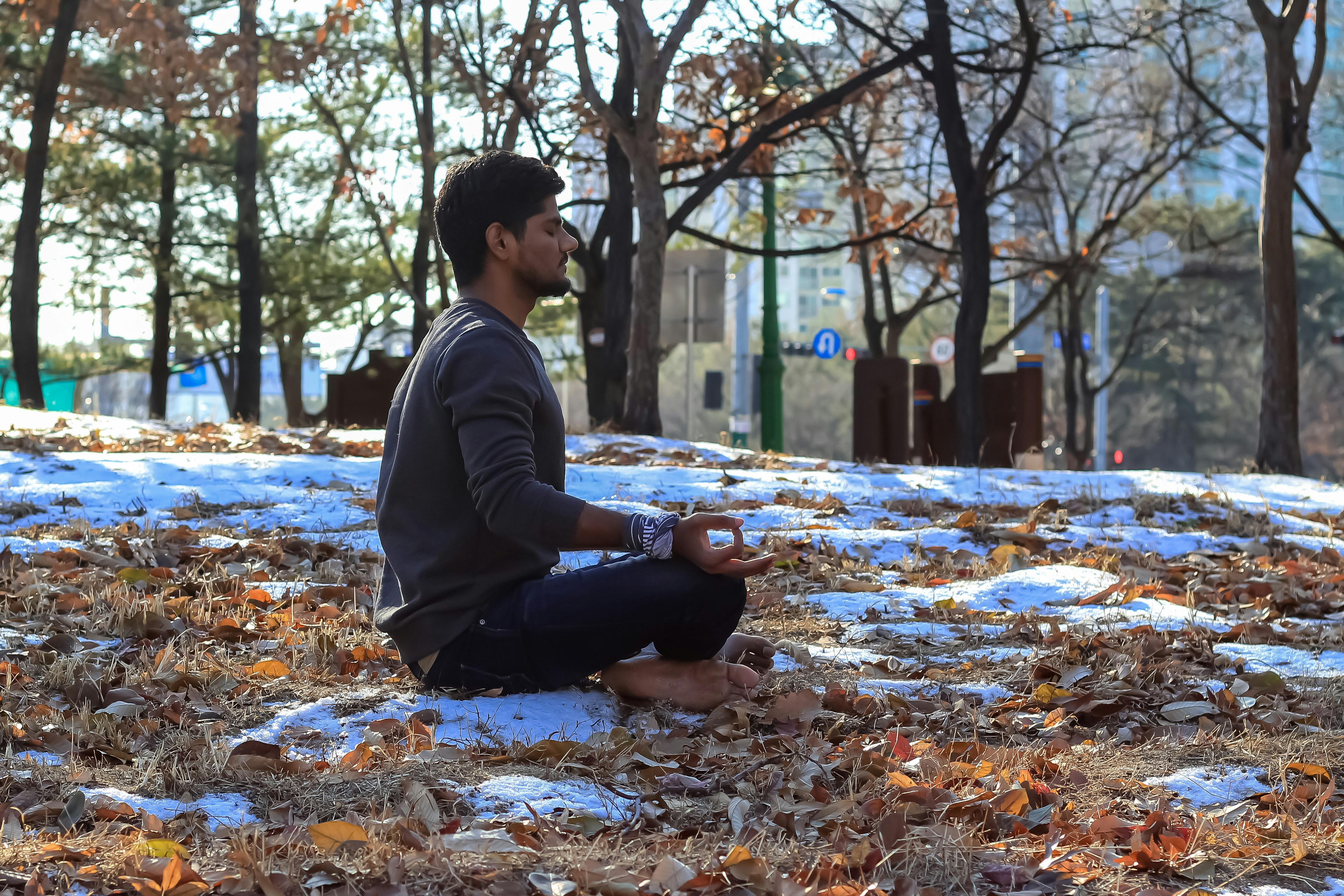Movement Meditation: Enhance Wellness with Mindful Workouts
Are you looking to deepen your connection between mind and body while working towards your fitness goals? Movement meditation offers a dynamic approach that seamlessly blends mindful practices with invigorating workouts, promoting holistic well-being like never before. This novel fitness trend allows you to merge the intensity of physical exercise with the tranquility of meditation, resulting in a unique practice that nurtures both your mental and physical health.
Understanding Movement Meditation
Movement meditation is not just another fitness trend; it's a transformative approach that integrates mindfulness into physical activity. The underlying principle is simple: by being more present in your movements, you're better able to connect your body, mind, and spirit.
Instead of viewing workouts solely as a means to an end, movement meditation encourages you to appreciate the process. Each stretch, every breath, and all the motions are acknowledged mindfully, bridging the gap between physical exertion and mental clarity. By engaging in this practice, you can experience profound benefits that elevate your fitness routine to new heights.
The Science Behind Movement Meditation
Research shows that mindfulness practices, when combined with physical activity, can lead to enhanced performance, reduced stress levels, and greater satisfaction in overall health and fitness routines. A study published in Psychological Science highlighted that individuals who practiced mindful movement showcased increased empathy, better emotional regulation, and a higher propensity to engage in their workouts.
When you embrace movement meditation, you create an opportunity to rewire your mind. This is grounded in concepts such as neuroplasticity, where your brain forms new connections and pathways through continual experience, leading to long-term changes in behavior and outlook.
-> Dive deeper into the scientific connections of mindfulness and fitness with our post on neuroplasticity insights in fitness.
Integrating Mindfulness into Your Workout Routine
Merging mindfulness with fitness doesn’t require you to overhaul your entire routine. Instead, you can enhance your current practices by incorporating simple mindfulness strategies. Here’s how:
1. Mindful Breathing Techniques
In any workout, good breathing is essential. But rather than letting it become a mechanical action, practice mindful breathing. Focus on inhaling deeply through your nose, letting your chest rise. Hold for a second, then exhale slowly through your mouth. Synchronizing your breath with movements—like inhaling as you lift weights or exhaling during a squat—creates a natural rhythm.
2. Body Scanning
Start your workout with a quick body scan. This means checking in with each part of your body, from your head to your toes, and observing how you're feeling physically. This practice not only increases awareness of your body but also helps you discern areas of tension. Adjust your movements accordingly, making them more fluid and aligned.
3. Setting Intentions
Before you hit the gym or lay down your yoga mat, set an intention for your session. It could be to connect with your breath, find joy in movement, or simply enjoy the process. This small ritual can galvanize your focus and help reinforce a mindful approach throughout your workout.
4. Listening to Your Body
One of the core principles of mindfulness is to tune into your body’s signals. If you feel discomfort or fatigue during an exercise, take a step back and assess. Allow yourself to adjust movements or even take a moment to rest. Honor what your body is communicating to promote a sustainable fitness regimen.
Exploring Different Disciplines within Movement Meditation
Movement meditation can be practiced through various disciplines. While yoga and Tai Chi are the most recognized, many other forms of exercise can take on a meditative quality when approached mindfully.
Yoga
The ancient practice of yoga integrates body postures, breath control, and meditation. With its emphasis on alignment and awareness, yoga can be a gateway to movement meditation. Styles like Vinyasa or Ashtanga invite dynamic flows that harmonize breath with movement.
For more insights into how yoga can enhance your mindfulness practice, explore our article on graphic recording for body awareness.
Dance
Dance is another expressive movement that can serve as a form of meditation. Whether it's contemporary dance, Zumba, or ballroom, allowing yourself to feel the rhythm and lose yourself in the music can foster a state of flow—a hallmark of meditative experiences.
Martial Arts
Many martial arts traditions, including Tai Chi and Aikido, emphasize mindful movements intertwined with self-discipline and focus. Practicing these arts can build not only physical strength but also mental resilience, creating a unique blend of movement meditation.
Walking Meditation
Walking meditation is perhaps the most accessible form of movement meditation. It allows you to experience this practice without needing formal training in various disciplines. Simply find a quiet space, and as you walk, concentrate on the sensations in your feet, the rhythm of your breath, and the environment around you.
Creating Your Movement Meditation Routine
Personalizing your movement meditation practice can help you find joy and sustenance in your workouts. Here's a framework to create your routine:
1. Choose Your Space
Select a location conducive to mindful movement. This can be a quiet corner of your home, a serene outdoor spot, or a yoga studio that inspires tranquility. Having a dedicated space can set the tone for your practice.
2. Allocate Time
Determine how much time you can dedicate to this practice. Start with shorter sessions—10 to 15 minutes—and gradually increase the duration as you become more comfortable.
3. Select Activities
Choose activities you enjoy and that lend themselves well to mindfulness. Mix and match disciplines, such as adding a yoga sequence followed by a walking meditation, to keep your practice fresh and engaging.
4. Reflect
After each workout, take a moment to reflect. Journal about your experience or note changes in your mood, energy, or thought processes. These reflections reinforce the value of integrating movement and meditation.
5. Stay Consistent
Establish a routine by setting aside specific times for movement meditation throughout the week. Consistency is key to incorporating mindfulness into your fitness journey.
Overcoming Challenges in Movement Meditation
While integrating mindfulness into your fitness routine can be rewarding, it’s essential to acknowledge challenges that may arise. Here are practical solutions:
Difficulty Staying Present
If your mind wanders during exercise, gently bring your attention back to your body. You can use your breath as an anchor. Focus on the rise and fall of your chest or the feel of your feet on the ground.
Perfectionism
Let go of the need for perfection in your movements. Remember that movement meditation is about connection and awareness, not achieving a particular skill level. Embrace the journey rather than the destination.
Time Constraints
Incorporating mindfulness does not have to be time-consuming. Mini sessions scattered throughout your day—like mindful walking to the grocery store or focusing on your breath during your commute—can be beneficial.
The Broader Benefits of Movement Meditation
The advantages of adopting a movement meditation practice extend well beyond mere fitness metrics. Here are some broader effects worth noting:
Enhanced Emotional Well-being
Mindfulness has been shown to reduce anxiety, depression, and stress levels. By integrating movement with mindful practices, you're likely to foster emotional resilience.
Increased Body Awareness
Participating in mindful workouts encourages greater awareness of your body's needs and abilities. This can translate to a more strategic approach to fitness, incorporating strength-building flexibility, and balance.
Better Physical Performance
Many athletes and fitness enthusiasts report improved physical performance with mindfulness techniques. When you're fully engaged during workouts, you can push harder, recover faster, and experience greater satisfaction in your results.
Building Community
Joining a group that practices movement meditation can foster connection and camaraderie. Whether it's a local yoga studio or an online fitness community, shared experiences can deepen your practice and commitment.
Improving Focus and Concentration
Mindfulness practices have demonstrated the ability to improve focus. With regular practice, you may find it easier to concentrate not only during workouts but in other areas of your life.
Final Thoughts
Movement meditation represents a beautiful synthesis of mindfulness and physical fitness. By connecting the depth of meditative practices with the vitality of working out, you can enhance your overall well-being. Embrace this innovative approach and allow yourself to explore not only new moves in your fitness routine but also deeper connections within yourself.
Consider weaving movement meditation into your workout history, contributing both to your fitness journey and personal growth. Discover how transformative this practice can be for your mental and physical health, and embark on a journey that resonates with both your aspirations and your humanity.
For more exciting concepts on how to merge creativity with fitness, explore our articles like dancing your way to wellness and biophilic workouts. Your fitness journey awaits—revise, embrace, and elevate it through movement meditation.
:















